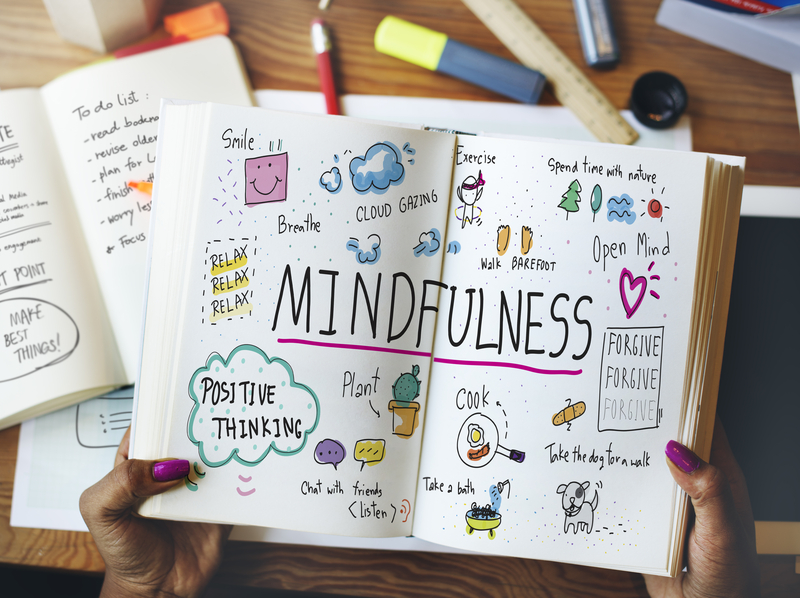All of us will suffer, at some point in our lifetime, and at times our stress levels can seem out of control. The human condition also means we will need to manage a certain amount of change. For example, transitions in our lives and circumstances including moving to a new house or starting a new job, changes to our health and abilities, as well as experiencing the loss of a loved one. Given life’s challenges it is likely that we will experience periods of low mood or anxiety. For some people these experiences will be short-term in nature, while for others they can last for a long time. For those where their problems are severe and enduring, formal healthcare services are important. The role of mental health practitioners in these services, including those in multidisciplinary teams, is to support people to understand their experiences. Practitioners also strive to help service users work out what might be keeping them ‘feeling stuck’, and to support them to adopt strategies which help improve their day-to-day lives and allow them to reach their longer-term goals.
Mindfulness is about moving away from our ‘automatic pilot’ approach (what we can also think of as our ‘doing mode’) and moving to more of a ‘being mode’. Where people experience depression or anxiety, they often find it is very difficult to tolerate or simply ‘be in the moment’. Logically so, because depression often causes us to replay or ruminate about events from the past (including when we have experienced loss). While anxiety can at times feel like our minds are on ‘fast forward’, where we anticipate an almost ‘worst-case scenario’ future (also known as catastrophizing). In evolutionary terms these were useful skills or approaches. Replaying the past helped us learn from near misses to be safer next time, and a degree of anxiety means we are alert for future danger and prepared where necessary. These approaches or responses were adaptive when the danger was ‘purely physical’, back in the times of the ‘cave man’. But nowadays, for those in high income countries, our lives are physically much safer and the ‘threats’ we experience are more commonly psychological issues related to factors including loss, shame and embarrassment. This means that our species’ old strategies of ‘replaying’ and ‘fast forwarding’ are not as helpful as they once were and can keep us stuck feeling distressed. One proven strategy to help us manage our distress is by becoming physically active. Feeling low impacts on our motivation and often puts us off from being active. However, research has consistently shown that regular physical exercise can boost our mood. It might be the last thing we would think of doing when down, but it is something that certainly works.
Another solution or intervention to assist us in our modern world is mindfulness. Mindfulness is about moving away from our ‘automatic pilot’ approach (what we can also think of as our ‘doing mode’) and moving to more of a ‘being mode’. This is where we become more consciously aware of our thoughts, feelings and physical experiences or sensations, and potentially explore how we want to respond to these. While mindfulness has grown in popularity in recent years, many people may initially feel it is not for them. They may not see themselves as the type of person who knowingly or deliberately uses psychological techniques. Or they may associate mindfulness with religion or feel there is no way mindfulness could help them, given the complex situation they are experiencing (e.g. where a loved one is acutely unwell, or they are experiencing ongoing carer stress).

To better understand mindfulness and its potential, it’s important to address five common myths:
- Mindfulness is not the same as meditation, as there are many ways of being mindful that do not involve formal meditation. You can be mindful outdoors amongst nature, or in any of your daily activities – even the basics of doing the washing up or making a meal.
- While there are mindfulness practices or features within every major religion there are also lots of ways to practice mindfulness without being a ‘religious person’.
- Mindfulness is not the same as relaxation, as you can be mindful in any situation, even those that are really challenging. This makes it a useful approach for people who experience stress in their busy lifestyles. It does not need to be time-consuming either, even just a few minutes of mindfulness exercises every day should help you feel more settled or better able to be in the moment.
- Mindfulness is not about controlling your thoughts or being happy all the time – mindfulness is a way to experience all thoughts and experiences, both positive and negative, so it can be helpful even in complex situations.
- People who have experienced traumatic events can benefit from mindfulness, provided it is tailored to meet their needs, feels safe and is provided using support from a mental health professional.
Mindfulness can assist us to focus more and manage our emotions which is key to sound mental health.When we broaden out this understanding of mindfulness, we start to see that it is potentially useful for a wide range of people, even those who may have initially thought it was not for them. As we practise mindfulness a range of changes can be observed, for instance we start to lay down new pathways in the brain, in effect, we rewire the brain. Magnetic Resonance Imaging (MRI) scans can actually show these changes to the brain. One study found that after eight weeks of a mindfulness-based intervention, people reported a reduction in their stress levels. People also experienced increased brain volume in parts of the brain responsible for learning, regulating emotion and compassion (hippocampus and prefrontal cortex), and a decrease in the part of the brain that responds to threat (amygdala). In practical terms this means mindfulness can assist us to focus more and manage our emotions which is key to sound mental health.
In addition to mindfulness more generally, what we also know is that being outdoors in either green spaces (such as parks or forests) or blue spaces (around water) is linked to improved mental wellbeing. Natural settings decrease stress on a very physical level including lowering our heart rate, blood pressure and cortisol levels (a stress hormone). For people with dementia, studies have shown that spending time outside can lead to less agitation, reduced stress levels, increased self-esteem and potentially some improvements in communications.
So, we know that mindfulness (which can be achieved both outdoors and indoors) is beneficial and studies suggest that interventions including those based on mindfulness are thought to be more effective when delivered in outdoor environments and that improvements are sustained at one month. This suggests that there is something really special about combining mindfulness and getting out and about outdoors.



Rate and Review
Rate this article
Review this article
Log into OpenLearn to leave reviews and join in the conversation.
Article reviews